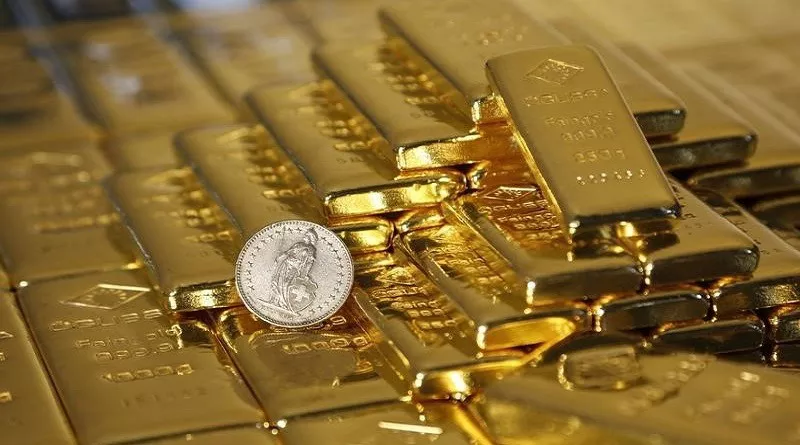Gold has long held a unique position in the world of finance and investments. It is often seen as a hedge against economic uncertainty and a store of value. Gold futures, in particular, are actively traded financial instruments that allow investors to speculate on or hedge against future gold price movements. In this article, we will explore the various factors that influence gold futures prices, shedding light on the complex dynamics that drive this precious metal’s market.
I. Understanding Gold Futures
What Are Gold Futures?
Gold futures are standardized financial contracts that obligate the buyer to purchase and the seller to sell a specified quantity of gold at a predetermined price on a future date. These contracts are traded on commodities exchanges such as the Chicago Mercantile Exchange (CME) and the Intercontinental Exchange (ICE). Gold futures are used by a wide range of participants, including speculators, hedgers, and institutional investors.
Speculation and Hedging
Gold futures serve two primary purposes. Speculators enter the market with the aim of profiting from price movements. They can take long (buy) or short (sell) positions based on their expectations of where gold prices are headed. On the other hand, hedgers use gold futures to protect themselves from price fluctuations. For example, a gold miner might use futures contracts to lock in a price for their future gold production, reducing the risk of adverse price movements.
II. Factors Impacting Gold Futures Prices
1. Supply and Demand
The basic economic principle of supply and demand plays a significant role in determining gold futures prices. A surge in demand, particularly from sectors such as jewelry and technology, can lead to higher gold prices. Conversely, oversupply or decreased demand can exert downward pressure.
2. Economic Data and Indicators
Gold prices are sensitive to economic data releases. Key indicators like GDP growth, employment numbers, and inflation rates can impact the metal’s value. A strong economy and low inflation may lead to lower gold prices, while economic uncertainty or inflation concerns can drive prices higher.
3. Currency Movements
Gold is priced in U.S. dollars, so fluctuations in currency exchange rates can influence gold futures prices. A weaker dollar typically makes gold more attractive to international investors, leading to increased demand and higher prices. A stronger dollar may have the opposite effect.
4. Interest Rates and Opportunity Costs
The opportunity cost of holding gold is the potential return that could be earned from alternative investments, such as bonds or equities. When interest rates are low, the opportunity cost of holding gold is reduced, making it more appealing. Conversely, rising interest rates can increase the opportunity cost and put downward pressure on gold prices.
5. Central Bank Policies
Central banks play a significant role in gold price movements. Their monetary policies, such as interest rate decisions and quantitative easing measures, can impact the perceived value of gold. Lower interest rates and expansionary monetary policies tend to support gold prices.
6. Geopolitical Events
Geopolitical events, such as conflicts, trade disputes, and political instability, can create uncertainty in financial markets. During times of geopolitical turmoil, investors often seek refuge in gold, driving up its prices. These events can lead to sudden and significant price spikes in the gold futures market.
III. FAQs (Frequently Asked Questions)
1. How can I invest in gold futures?
Investing in gold futures typically requires opening an account with a brokerage that offers access to commodities futures markets. It’s essential to understand the mechanics of futures trading, margin requirements, and risk management before getting started.
2. Are gold futures suitable for long-term investors?
Gold futures are generally used for short- to medium-term trading and hedging. Long-term investors may prefer physical gold or gold exchange-traded funds (ETFs) for their investment needs.
3. What is the relationship between gold and the U.S. dollar?
Gold is priced in U.S. dollars, so there is often an inverse relationship between the two. A weaker dollar tends to boost gold prices, while a stronger dollar can put pressure on gold.
4. Can gold futures be used for hedging purposes?
Yes, gold futures are commonly used by businesses involved in the gold industry, such as miners and jewelry manufacturers, for hedging against adverse price movements.
5. How do I stay updated on factors influencing gold futures prices?
Staying informed about factors affecting gold prices requires monitoring economic news, central bank policies, geopolitical developments, and market sentiment. Financial news sources and commodities research can be valuable resources.
In conclusion, gold futures prices are influenced by a multitude of factors, each with its own level of importance and complexity. Understanding these factors and their interplay is essential for investors and traders in the gold futures market. Whether you are looking to profit from short-term price movements or protect your investments in times of uncertainty, a comprehensive understanding of these dynamics is crucial for success in the gold futures market.

